Apple Announces The Apple Watch 4: Fully Custom SiP
by Andrei Frumusanu on September 12, 2018 11:30 PM EST- Posted in
- Mobile
- Apple
- Wearables
- Apple Watch Series 4
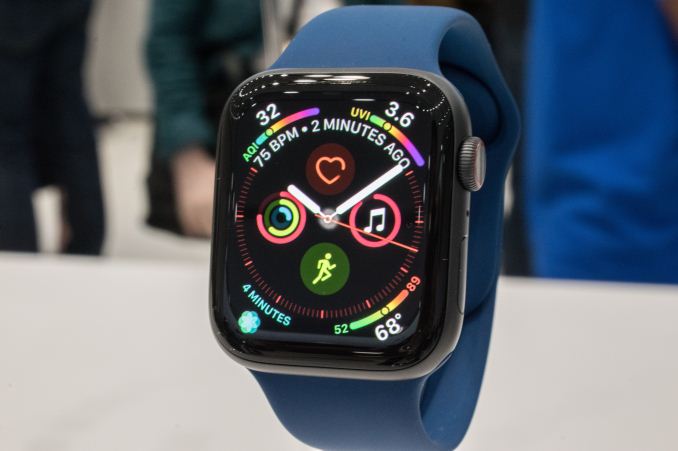
Today alongside the new iPhone XS, XS Max and the XR, Apple first introduced the new Apple Watch Series 4. The fourth generation of the watch sees a major revamp in its specifications and the most visible external design change to date.
Inside the new Apple Watch 4, we see Apple transition to a new SiP (Silicon in Package) design with a new S4 SoC containing for the first time a custom Apple designed CPU and GPU. We don’t have much information on the specifications here other than the new dual-CPU is 64-bit capable and is promised to perform twice as fast as it’s predecessors – which used Arm’s Cortex A7.
It’s to be noted that the 64-bit part of the new CPU might not be as clear as one might think, as there’s been some evidence (Credit @KhaosT) that the Watch might be running in ARM64_32 mode, which would be a 32-bit submode of AArch64 that allows for 32-bit pointers while retaining the ISA advantages of AArch64. Such a mode would be most optimal for a low-memory device such as smartwatch.
Prior generations of the Apple watch used a variation of an Imagination SGX core. For the S4 again Apple claims it’s a new custom GPU – again we don’t have any details here other than what Apple talked about in the presentation.
Finally the new S4 SiP includes new accelerometer and gyroscope functionality that has 2x the dynamic range in terms of measurable values, as well as able to sample data at 8x the speed. What this allows Apple to do is to collect a lot more data at higher accuracy and try to determine the scenario that you’re in. For example Apple claims the new watch is able to discern between falling, tripping and slipping just based on the movements that the person makes – whose detection is now enables by the new hardware sensor capabilities.
The new watch comes in 40 and 44mm sizes, and is fully compatible with prior generation Watch bands.
The core new characteristic of the new watch is the larger screen which now achieves a higher screen-to-body ratio on the watch. This is actually a pretty great improvement as the new screen feels a lot more pronounced.
To emphasize the new screen, Apple provides new watch faces with configurable information. Here the new watch allows for up to 8 complications which are at the disposal of the user. There’s also several new animated wallpapers available – these are pre-recorded videos that just play back on the watch face.
The new watch has also lost some of its thickness as it’s now 10.7mm versus the series 3’s 11.4mm. Here I’m still hoping one day we can see even thinner models, as it’s my personal least favourite aspect of smartwatches in general. Even though its thickness got reduced and it offers more performance and features, the new watch is said to maintain the same battery life longevity as its predecessors.
The sides of the watch have also changed quite a bit. On the left side we now have a larger speaker grill; Apple promises the new speaker to be a lot louder and surprisingly so for a watch. Unfortunately during the loud hands-on this was quite hard to evaluate.
On the right side we see the microphone being relocated between the button and the crown dial. The reasoning here is to reduce echo effects from the new more powerful speaker. The crown has been improved and now gives haptic feedback, trying to mimick the “clicking wheel” feel such as in more mechanical dials, or more aptly, the clicking of a mouse wheel when you scroll with it. The haptics here are enabled not by the crown itself, but by a vibration motor inside the watch.
On the back of the watch we don’t see much visible changes, however we now find a new improved optical heartrate sensor which is able to detect the heart rhythm.
What’s actually the most interesting in terms of the health monitoring capabilities of the new watch is that it actually includes for the first time ever a ECG (electrocardiogram) functionality in an over the counter consumer device. Here all you have to do while wearing the watch is to touch the crown – which serves as an anode and closes the loop created across your arms and heart.
Apple was very proud to be the first consumer device to enable this and had even received approval by the US FDA. It’s to be noted that this will beg some questions on how the feature will be implemented in other regions, as using and advertising such medical monitoring features might be disallowed if you don’t have regulatory approval.
Apple definitely is leading the smartwatch sector by a significant margin, and the company was even keen to point out that the Apple Watch is the most popular watch overall as well (Though that’s just because there’s no one dominating classic watch in a similar position).
The new Apple watch with GPS is available for $399 and the LTE variant comes in at $499 and are both available starting September 17th, with preorders starting this Friday the 14th. Overall I found the new Apple Watch 4 a lot more attractive than its predecessors – though it’s still a quite steep price point.


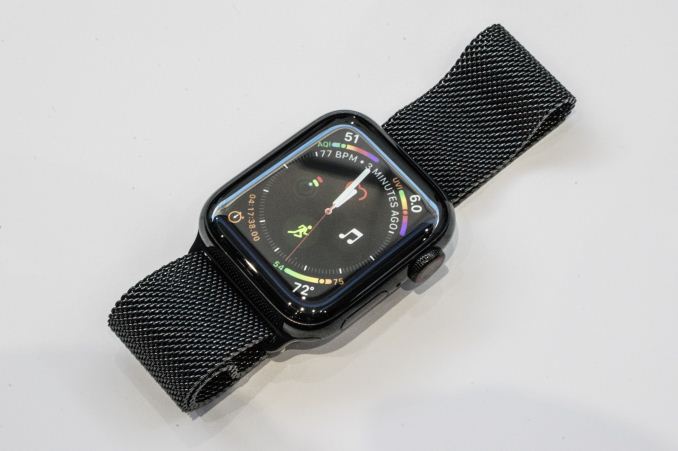
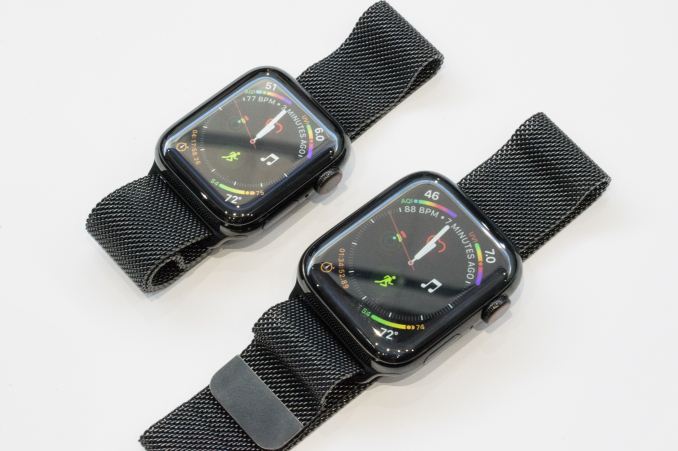
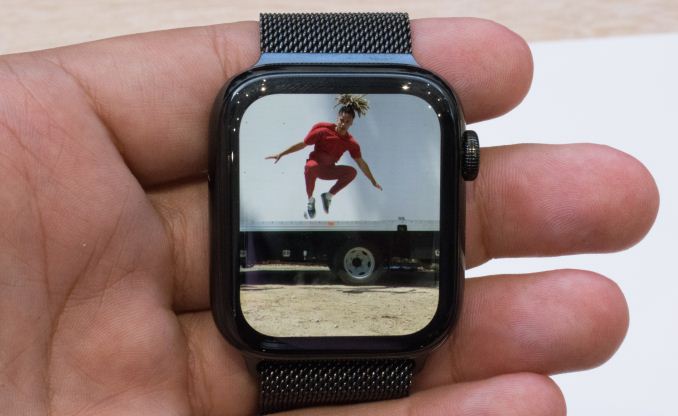
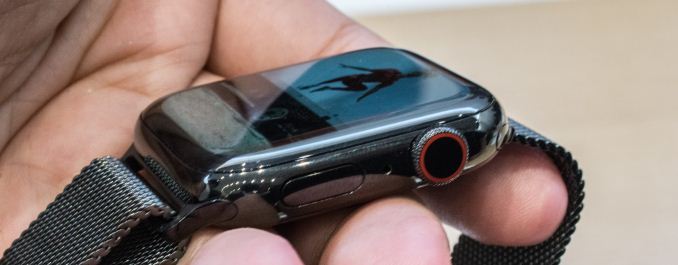









88 Comments
View All Comments
ingwe - Thursday, September 13, 2018 - link
Thanks for explaining this. Seems very informative.id4andrei - Thursday, September 13, 2018 - link
The distinction is meaningful as only approved devices are subjected to stringent FDA testing. Clearance is an easy barrier to pass and awarded relative to other "cleared" devices already on the market, devices that you only approximately need to match.This is very telling regarding the accuracy of the ECG feature. Let's wait and see maybe Apple would want to FDA approve their AW for the purpose of ECG, until then it is not a class III medical device.
repoman27 - Thursday, September 13, 2018 - link
While you are correct about the distinction between "approval" and "clearance" as far as the FDA is concerned, you're also willfully ignoring the fact that this was a De Novo request and intentionally spreading FUD. It turns out that the ECG app is what has been cleared by the FDA, and it was determined to be Class II, the same class as home blood pressure cuffs. Here is the actual FDA clearance letter: https://www.accessdata.fda.gov/cdrh_docs/pdf18/DEN...Being De Novo, there were no other comparable "cleared" devices on the market. Apple's product is the yardstick by which the FDA will now classify future devices requesting clearance.
No reasonable assessment of the risks associated with the Apple Watch ECG feature would ever place it in Class III or even Class II (Special Controls) which would merit FDA approval. The FDA would never proceed with the approval process for this type of device. You can't make a Band-Aid a Class III medical device by putting it through the FDA approval process.
id4andrei - Thursday, September 13, 2018 - link
Apple got it first in a smartwatch but KardiaBand(also FDA cleared) got it before that, but in an AW band, still wrist based. They do the same thing and the distinction is band vs smartwatch. Apple's coup here is relative to future smartwatches but not relative to the ECG feature. None of them are FDA approved, none of them have undergone FDA review.A band-aid cannot be a class III medical device but at the same time FDA clearance is not an indicative of quality, reliability, accuracy. Just because Apple(and Kardiaband) got FDA clearance means nothing. It's just marketing tie-in to induce a false sense of security. I'd argue the ECG device at your local cardiologist is a proper approved medical device because FDA approval is not just associated risk, it's also a quality assurance; clearance is not.
repoman27 - Friday, September 14, 2018 - link
They have undergone FDA review, which classified them as not requiring approval prior to marketing.Mandatory performance standards are one of the special controls associated with Class II devices. Premarket approval is for Class III devices that support or sustain human life.
The FDA defines and regulates the medical devices that can be sold legally in the US. They are a federal agency. FDA clearance isn’t a “marketing tie-in”, it’s a requirement to sell a medical device in the US.
nathanddrews - Thursday, September 13, 2018 - link
Early rumors suggested that the new watch would use the first-ever-consumer MicroLED. Did that end up happening or is this an OLED or IPS? I haven't seen much detail about the watch screen...repoman27 - Thursday, September 13, 2018 - link
It's OLED with a Low-Temperature Polycrystalline Oxide (LTPO) backplane.V900 - Thursday, September 13, 2018 - link
Isn’t LTPO an LED technology? Or usually used with LED in any case?name99 - Thursday, September 13, 2018 - link
Apple's version of LTPO uses OLED to make the light, and LTPO as the backplane for the display electronics. This saves 5 to 15% power.It appears (as far as I can tell) to be an Apple display innovation, not a generic display innovation from someone like Samsung or LG.
http://www.freepatentsonline.com/y2017/0092196.htm...
(The LED in this context refers to each pixel which is an individual OLED.
Some LCD screens talk about using LEDs, but they mean using (non-OLED) LEDs as the backlight, not per pixel.)
It would seem obvious to extend this to the iPhone, and I expect we will have that next year. Presumably it was considered too risky to ramp up what seems like a fairly new technology to try to cover this year's phones.
MrSpadge - Thursday, September 13, 2018 - link
> Here the new watch allows for up to 8 complications which are at the disposal of the user.Ha, I've alsways wanted to spend big on getting even more complications from my devices!